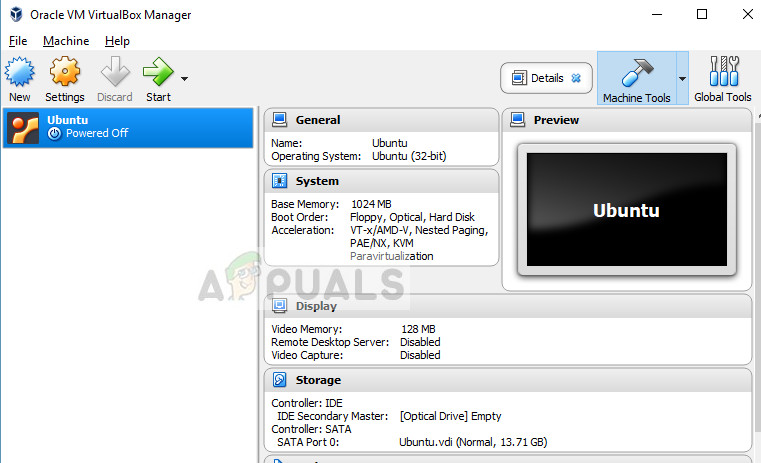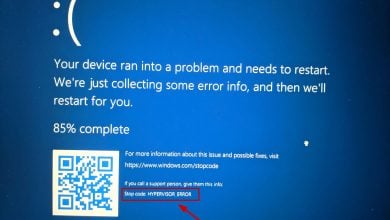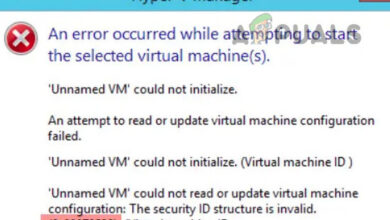Fix: VirtualBox not opening
Oracle VM VirtualBox is a free hypervisor and platform to run virtual devices on your computer which is developed and maintained by Oracle. It is one of the most popular virtual managers out there and hosts almost all of the operating systems such as Linux, Windows, Solaris, OS/2, Haiku etc. People use it to use another operating on top of their current OS by defining a special environment for it.

Lately, there have been reports of VirtualBox not opening especially in Windows. This issue started to surface shortly after the recent Windows updates. The reason why this issue might occur is because of irregularities in the configurations, the older version installed, and corrupt installation files. We will go through all the solutions one by one starting with the easiest.
What causes VirtualBox not to open?
The issue of VirtualBox not opening essentially means that you cannot make any virtual machine and get it to run. This issue surfaced after Microsoft started releasing updates of Windows 10 and persists to this very day. Here are some of the reasons why this issue occurs:
- Some modules like Hyper-V may not be enabled on your computer or might be disabled after a recent Windows update.
- Windows has tightened its grip on driver installations and since VirtualBox installs the drivers for the virtual machines independently, this can conflict and cause issues.
- Constant updates of Windows 10 causes issues with the software displaying the virtual machine on your computer. A concept called Paravirtualization. Changing the present values is usually the fix of this situation.
How to fix VirtualBox not opening
Like mentioned before, there have been numerous reports about VirtualBox not opening after Windows 10 update. This issue is not only present in Windows but also occurs in Mac and Linux. The virtual manager would not start either the whole application or the specific operating system which you are trying to run in the virtual environment. This tutorial will try to fix all the issues mentioned.
Solution 1: Updating VirtualBox
Before you try anything else, it is essential that you update your VirtualBox to the latest version available on their official website. There have been numerous cases where the older version has compatibility issues with the latest version of Windows which causes the application not to launch or cause errors in its operating system.
- Navigate to the official website of VirtualBox and install the latest version available.

- Once you have downloaded the executable, we need to uninstall the existing version before you move on to installing the latest one. Press Windows + R, type “appwiz.cpl” in the dialogue box and press Enter. Navigate through the list of programs and uninstall the application.
- Once you have uninstalled the application, install the latest downloaded version.
- If you already had existing VM’s in the older VirtualBox, you can try pointing your newly installed VM to your directory. The path where your VM’s are stored is:
C:\Users\[username]\VirtualBox VMs C:\Users\[username]\VirtualBox VMs\[vm group]\[vm name]
Solution 2: Enabling Hyper-V
Microsoft Hyper-V, also known as ‘Windows server virtualization’ in the past which can create virtual machines on systems running Windows 8 or higher. This module helps other third-party applications create their virtual machines on your computer. If this method is disabled, you might experience problems. We can make sure it is enabled and try launching VirtualBox again.
- Press Windows + S, type “Turn Windows features on or off” in the dialogue box and open the application.
- Locate “Hyper-V” from the list of options and check Once it is checked, press OK for the initialization process to begin.

- After the module is enabled, restart your computer completely and try making new virtual machines using VirtualBox and see if this solves the issue.
Solution 3: Disabling Driver Enforcement
Driver enforcement is a safety mechanism in Windows which doesn’t let suspicious or badly written drivers being installed on your operating system. Since VirtualBox install its own drivers for virtual machines in a virtual environment, this can conflict with the settings. We can try turning driver enforcement off and see if this fixes the issue.
- Press Windows + S, type “command prompt” in the dialogue box, right-click on the application and select “Run as administrator”.
- Once in elevated command prompt, execute the following command:
bcdedit.exe /set nointegritychecks on

- This will disable the integrity checks and let you install any driver. If you want to enable the integrity check again, enter the following command in the elevated command prompt.
bcdedit.exe /set nointegritychecks off
Restart your computer after disabling the enforcement and check if the issue is resolved.
Solution 4: Installing VirtualBox adapters manually
There are some cases where VirtualBox fails to install network adapters properly on your computer. Because of this, the application might throw you an error “Unable to load VirtualBox”. In this case, we can try installing the VirtualBox network drivers properly and then setting the configuration properly.
- First, delete all the previous VirtualBox adapters. After deleting, press Windows + R, type “devmgmt.msc” in the dialogue box and press Enter.
- Once in the device manager, click Action > Add legacy hardware.

- Now install the Oracle VirtualBox adapters manually. The path where they are located is usually the following:
C:\Program Files\Oracle\VirtualBox\drivers\network\netadp\VBoxNetAdp.inf
- Now once we have installed the drivers correctly, we can move forward and configure them properly. Start Oracle VirtualBox, click File > Preferences > Network > Host-only Network. Now click on Edit.
- Set the following information correctly in the respective fields:
IPv4 192.168.56.1
Mask 255.255.255.0
Now click on the DHCP server tab and set the following:
Server address: 192.168.56.100
Server mask: 255.255.255.0
Low address bound: 192.168.56.101
Upper address bound: 192.168.56.254
- Press OK to save changes and restart your computer. Now check if you can open VirtualBox.
Solution 5: Changing Paravirtualization
Paravirtualization is a software technique which allows virtual machines to have a software interface. This is similar but not at all identical to the underlying hardware-software interface. There are many reports that this features causes a lot of problems in VirtualBox. We can try changing its option to KVM and see if this does the trick.
- Launch VirtualBox, click on Settings > System > Acceleration > Paravirtualization Interface.
- Select the option of KVM instead of Default.

- Restart your computer completely and try launching the virtual machine again. Check if the issue is solved.
In addition to these solutions, you can also try the following:
- Disabling 3D graphics
- Run the application in compatibility mode with administrator privileges.
- Updating graphics drivers.
- Uninstalling other conflicting VMwares.





